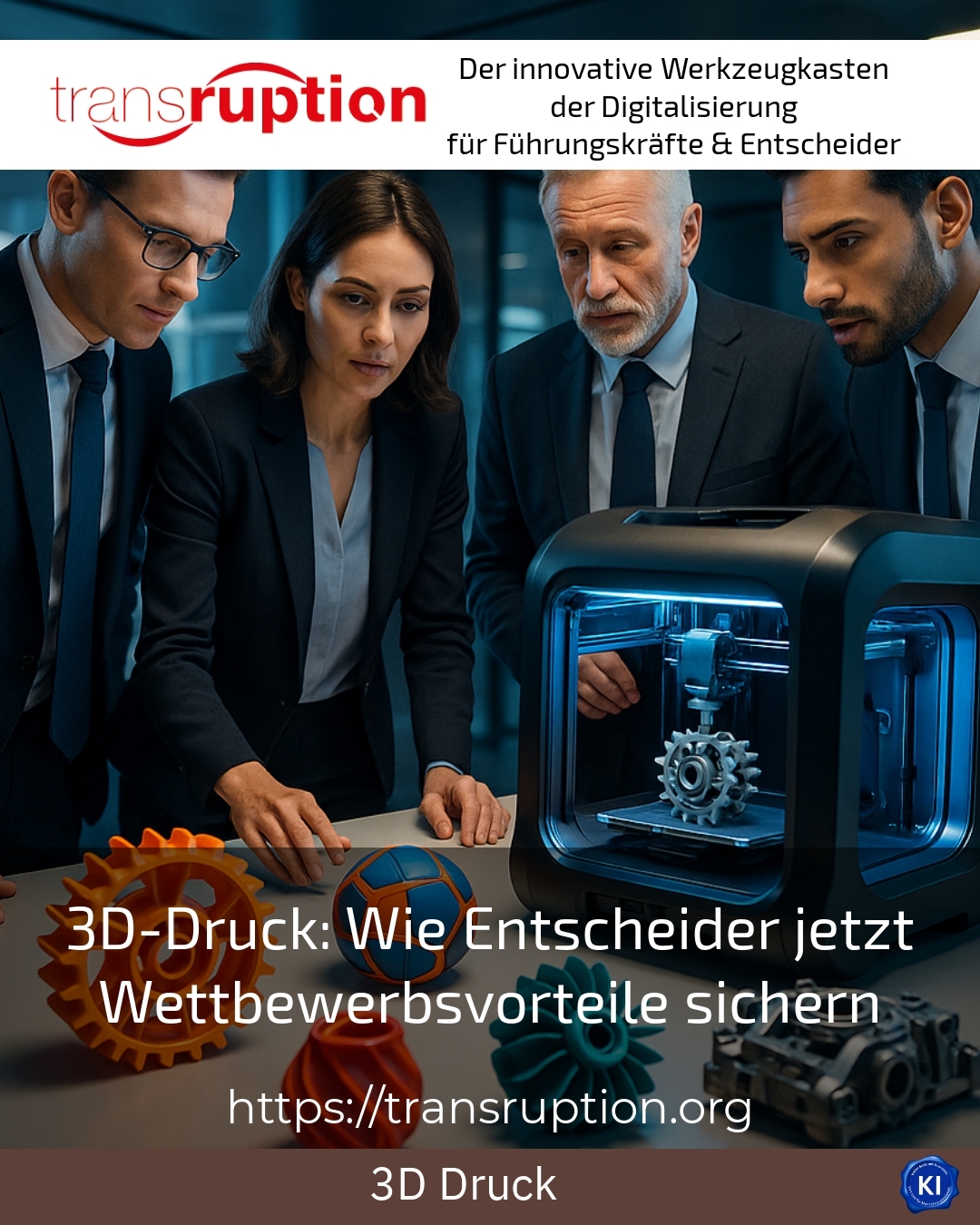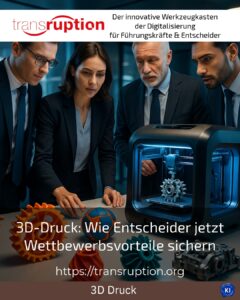Utilising competitive advantages through modern production technologies
Decision-makers in companies are often faced with the challenge of differentiating themselves in highly competitive markets. The integration of modern manufacturing technologies offers valuable opportunities here. 3D printing technology, which is far more than just a tool for prototypes, plays a special role here. It helps companies to react more flexibly to market changes, reduce costs and bring innovative products to market faster.
3D printing technology: impetus for agile product development
One of the most frequent questions that decision-makers come to us with concerns the acceleration of product development. This is where 3D printing technology provides effective support through rapid prototyping. Instead of weeks, the production of components using additive processes only takes days or even hours. This makes it easy to test and quickly implement design changes. The ability to try out different variants at low cost frees up innovation processes and gives companies a real head start.
Small companies also benefit from this, as 3D printing technology enables small series production without expensive tools or moulds. This means that individual customer requirements can be realised without driving up costs. This increases customer satisfaction and competitiveness in equal measure.
Efficient production and resource conservation through 3D printing technology
Decision-makers often report that 3D printing technology has significantly simplified their production processes. Particularly in sectors such as mechanical engineering or the automotive industry, complex components can be manufactured that would be impossible or very costly to produce using traditional methods. Additive manufacturing enables tool-free production, storage is reduced and supply chains can be relieved through local production.
A classic real-life example shows how a company uses 3D printing to produce spare parts on demand and significantly reduce storage costs. Downtimes in production facilities were minimised because the required components were immediately available and did not have to be reordered first.
BEST PRACTICE at company XYZ (name changed due to NDA contract) In this case, the company integrated 3D printing systems into its maintenance process. Spare parts that previously had to be ordered for months can now be produced in-house at short notice. This led to a considerable improvement in plant availability and significantly reduced the cost of expensive interim storage.
Flexibility and individualisation as decisive competitive advantages
3D printing technology also offers the possibility of manufacturing customised products in small batches or even individual items with high quality standards. Decision-makers from the consumer goods industry confirm that this option opens up new areas of business and allows them to respond much more flexibly to customer requirements. This application is becoming increasingly important, particularly for customised components or prostheses in the healthcare sector.
Another strength of the technology can be seen in the transport and logistics sector, where spare parts are manufactured directly at the point of use, thus eliminating the costs of expensive and time-consuming storage and shipping processes.
BEST PRACTICE at ABC (name changed due to NDA contract) A company from the automotive supply industry uses 3D printing to produce spare parts on demand. This allows them to fulfil their customers' individual requirements without exception and at the same time save costs by reducing stock levels. This flexibility has given them a competitive advantage in a fast-moving market.
Challenges and coaching to support implementation
Despite the attractive benefits, many decision-makers also face challenges when introducing 3D printing technology. These include selecting suitable systems, integrating them into existing processes and training employees. There is often a lack of clear guidance on how to best utilise the technology for their own business model.
This is where targeted coaching can provide support. The aim is to provide companies with project-related support during implementation, provide impetus and clarify specific questions. Transruption coaching is designed to support projects involving 3D printing technology and helps to set the right course in individual situations. Clients often report that they were able to achieve innovation goals much faster and overcome obstacles.
BEST PRACTICE at DEF (name changed due to NDA contract) A medium-sized mechanical engineering company turned to a coaching programme to tap into the potential of 3D printing for series production. Through accompanying workshops and practical instructions, the team was able to integrate the technology step by step and thus drive forward an innovation that strengthens their competitive advantage in the long term.
My analysis
3D printing technology offers a wide range of opportunities for companies to clearly differentiate themselves on the market. It is important not only to look at the technology, but above all to develop the individual fields of application with support. Transruption coaching provides targeted support in the realisation of complex projects and the development of sustainable competitive advantages. The integration of additive manufacturing is not a sure-fire success, but requires a strategic approach and customised solutions.
Further links from the text above:
[1] Benefits of 3D printing for small businesses - Sculpteo
[4] Success strategy - 3D printing - Harscher Prototyping
[6] Cars and aeroplanes: how 3D printing brings competitive advantages
[8] 3D printing for SMEs: Efficient production | GAMUNICH
For more information and if you have any questions, please contact Contact us or read more blog posts on the topic TRANSRUPTION here.
















